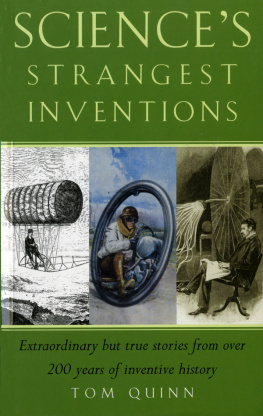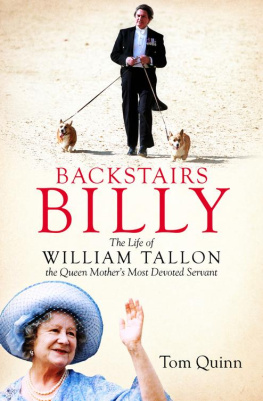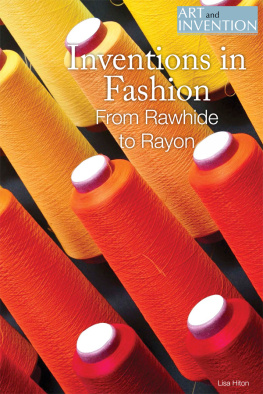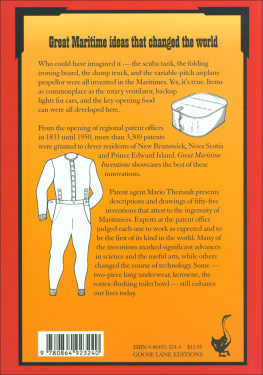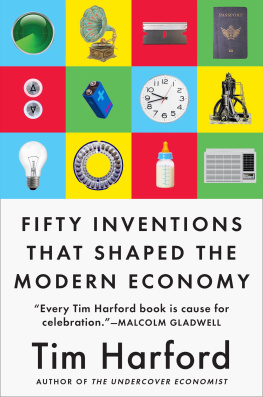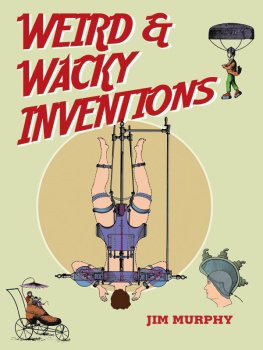SCIENCES STRANGEST INVENTIONS
Other titles in this series
Boxings Strangest Fights
Bridges Strangest Hands
Cinemas Strangest Moments
Crickets Strangest Matches
Fishings Strangest Days
Footballs Strangest Matches
Golfs Strangest Rounds
Horse-Racings Strangest Races
The Laws Strangest Cases
Medicines Strangest Cases
Motor-racings Strangest Races
The Olympics Strangest Moments
Politics Strangest Characters
Railways Strangest Journeys
Royaltys Strangest Characters
Rugbys Strangest Matches
Sailings Strangest Moments
Shootings Strangest Days
Tenniss Strangest Matches
SCIENCES STRANGEST INVENTIONS
Extraordinary but true stories from over 200 years of sciences inventive history
Tom Quinn

For my favourite inventors
Katy, James and Alex
Contents
Acknowledgements
Thanks to the staff at the British Library, the Science Museum, the London Library and the Stoke Newington Particle Physics Discussion Group, ably chaired by the delightful Gabrielle Koonin. And for putting up with endless emails and misquotations, Id like to thank Jane Donovan and Sarah Barlow at Robson Books.
Introduction
The mad scientist is one of the most enduring images of the modern world. Take Einstein, for example. We think of him as a genius but also as an eccentric, someone so lost in higher thought that he is completely out of touch with the day-to-day lives of ordinary mortals. In fact, nothing could be further from the truth. Without Einsteins insights into matter and energy insights that originally seemed completely bizarre even to other scientists there would be no television, no satellites, no radar, and little of the vast range of hi-tech medical equipment that has helped double the average length of time most of us can now expect to live.
But Einstein is only the most famous of a long line of scientists and inventors, amateur and professional, who have devoted their lives to trying to understand more about the way the world works. Of course, what makes inventing fun is that it attracts both the serious scientist and the wacky amateur the latter occasionally making a far more remarkable discovery than his or her professional colleagues. The history of science is littered with great inventions that have led to enormous changes in the way we live, but what makes that history truly interesting is the vast range of also-rans the inventions that never quite made it but were patented by their discoverers in the belief, and hope, that they would make a fortune, and/or change the world. From gigantic crossbows to edible record players, from head-bump measurers and bird-powered balloons to illuminated lavatories, the story of invention is as rich and varied as it is entertaining.
And when youve finished chuckling at the hat gun, the flying submarine and the automatic baby patter, remember that people laughed when Trevor Bayliss came up with his idea for a clockwork radio for this apparently bizarre notion proved to be a godsend for tens of thousands of poor people around the world. For the truth is that, in the world of strange inventions, what appears to be mad one day, can seem perfectly sane the next. Enjoy!
Tom Quinn
GIANT CROSSBOW
ITALY, 1486
Most people think of Leonardo da Vinci (14521519) as one of the greatest artists who ever lived. Certainly his Mona Lisa, now in the Louvre, is one of the most famous pictures in the world, but painting was actually only a small part of Leonardos vast output. His dozens of volumes of notes and sketches many of which are still unaccounted for were at least as often devoted to inventions, military fortifications and weapons as to portraits and landscapes.
Leonardo drew plausible parachutes, a convincing helicopter and numerous plans for flood defences. He was specifically employed to put his mind to many practical problems that required practical inventive solutions. But even Leonardo was prone to eccentric visual musings and one of his most off-beat inventions was a gigantic crossbow. Drawings for the crossbow survive and the masses of notes Leonardo made in his notebooks about the project reveal that for some time at least he really thought it might be made to work.
Building a giant crossbow perhaps as much as forty feet long and thirty across is not simply a matter of increasing the size of a normal crossbow. The stresses and strains are totally different and Leonardo realised this: his notes for the crossbow reveal ingenious methods for creating a laminated structure that would both bend and allow lateral movement vital given the distance the projectile would have to be dragged back along the body of the crossbow before being released.
Leonardos crossbow was not intended to fire arrows but rather large boulders or cannonballs; since much of late medieval warfare in Italy was based on city states attacking each other, the winner in any conflict was likely to be the side that could most effectively breach the enemys defences. If Leonardos gigantic crossbow had been made to work it would have hurled boulders at a citys walls with enough power to break through them.
An elaborately geared ratchet and pinion system was to be employed to load or draw back the bow and it was probably at this stage that Leonardo began to have misgivings about the practicality of actually using the device. Given the dimensions, the force necessary to get the bow ready to fire would have been enormous and possibly beyond the capabilities of the materials available then to build such a weapon. Yet Leonardos crossbow is still a strange and wonderful idea and one that, with modern materials, could almost certainly be built today.
THE MIDAS TOUCH
ENGLAND, 1580
Medieval and Renaissance scientists or philosophers, as they were then known frequently devoted their lives to the search for the philosophers stone, which was said to be the key to all knowledge. It would also give up the power to transform base metal into gold. Efforts to discover the philosophers stone make modern attempts at man-powered flying machines, water-driven buses and celestial time machines look almost sane.
The celebrated Dr John Dee (15271608), Elizabeth Is favourite scientist and man of mystery, is a case in point. There were several attempts to impeach the old man he seems always to have been old! on the grounds that his secret investigations put him in too regular contact with the devil and all his minions. But Dr Dee survived the numerous attacks on him and his advice was much sought on matters to do with divination, prophesy and the dark arts. Despite his reputation as a man of enormous wisdom, Dee spent his life looking for the secret of the philosophers stone and all to no avail hardly surprising when one considers that a lot of his research involved boiling slugs mixed with virgins urine and mandrake root.
Hundreds of other early scientists took the philosophers stone route and at least one anonymous inventor made a device for detecting the stone. Hardly anything is known about the device but it was said to be a cross between a medieval astrolabe (a curious brass instrument for measuring the relative distances of the stars) and an orrery (a clockwork model of the solar system). The unnamed inventor, who would certainly have known of Dr Dee, worked in London and was clearly a better businessman than scientist: his device could never be proved useless since someone would have to find the philosophers stone in order to prove that the detector was unable to detect it. The inventor could indefinitely claim that his detector had not yet worked only because no one had yet got close enough to the stone for the detector to pinpoint it. It seems not to have bothered anyone that the inventor was trying to sell a device that if it really worked he would be far more likely to keep a secret as it would enable him alone to find the stone. It all sounds rather like those modern newspaper advertisements that offer to tell the gullible the secret of making money by writing if the advertisers really knew how to do it they would write that blockbuster themselves.
Next page
